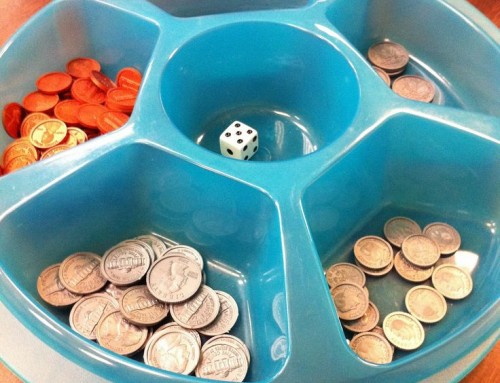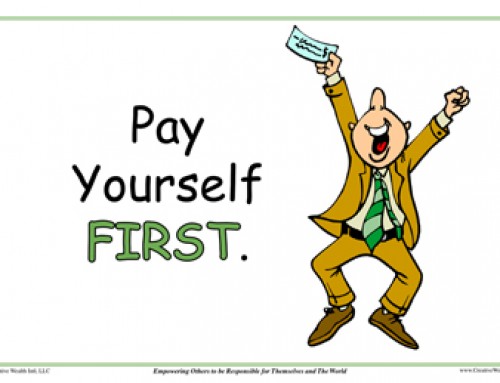In February of this year (2011) I had the honor of teaching The Money Game to a group of 4th graders on Tortola Island (BVI) in the Caribbean. I had gotten to know their father, Aragorn Dick-Reed, an artist and organic farmer who was born on the island, and he asked his son’s teacher if I could come in and teach the kids a little bit about money. Ryan, their teacher, said it would be just fine.
Since I only had two short hours with the kids, I knew it was critical to create a simple outline with only the rounds of The Money Game and none of the extra Camp Millionaire activities thrown in (like I’m used to doing:-).
What you have below is exactly what I did in those two hours and it worked great.
I mention below, but I’m going to say it up here as well, STICK WITH THE OUTLINE! What I mean is, don’t get caught up in the moment, thinking you have to tell them ‘one more thing’ because if you do, you won’t get through the five rounds and it’s imperative to get through five rounds of the game so they get their first taste of that delightful stuff…PASSIVE INCOME.
Preliminary:
- This outlines assumes you already know how to play The Money Game® and you have all of the materials necessary to play the game.
- If you’re not in the US, make sure you understand the income tax structure so you can talk about it and answer questions from the students during the Setup Activity.
- Find out from the teacher or host if there’s anything special you need to know about the class/group in general.
- If desired, make sure the students have a piece of paper to write down what they learned after each round.
- Register, Reconcile, Remember is simply the order with which you play each round. After they get their paychecks, they pay themselves first (round 2 and up), pay their expenses,do their registers, then reconcile their statements. Finally, ask what they remember.
Materials:
- Money Game materials, including hats/bags/boxes for taxes exercise
- Moola if desired. Have a small prize if using moola.
- 4 x 6 cards or construction paper
- Masking tape
- Markers for players
- Pencils for players
- Flip chart and big markers for instructor
- Music/computer
- Name tags for players so you can call them by name easily
Great the students situated in chairs in one row if a small group, or two rows if needed.
Start with your Enrolling Questions:
How many of you like money?
How many of you think you’re going to need a little bit when you get older?
How many of you think you probably should learn how to use it wisely BEFORE you leave home and have to do it all by yourself? Good call!
So…Why should you learn about money?
Have them write down on the construction paper or 4 x 6 cards why they think it would be good to learn about money. Give them a couple of minutes. Have them tape their cards or papers up on the wall in front and briefly go over what they wrote. If they forgot something critical, add it in.
Set up activity – employer/employee/paycheck/tax scenario.
• Talk through the days of the week per the game instructions.
• Pass out paychecks to employees
• Use local tax structure to deduct taxes from gross pay to end up with net pay.
• Throw away all white paychecks before beginning normal rounds of the game.
ROUND ONE – They are now all YOUR employees!
Registers, Reconcile, Remember (ask them what the learned).
Introduce Most Important Rule/Habit of all financially free/wealthy/rich people: Pay Yourself First!
Ask them, “If you want to learn how to do something, should you learn it from someone who knows how to do it or doesn’t know how to do it?” Exactly.
“So, if you want to grow up and have more than enough money than you need, should you do what RICH people do or POOR people do?” Exactly. Rich people.
How many of you want to know the most important thing rich people do to get rich?
Well, they do this thing called Pay Yourself First. Pay yourself __________.
ROUND TWO – Register, Reconcile, Remember
Note: Remind them to pay themselves first BEFORE paying their expenses.
ROUND THREE – Register, Reconcile, Remember
Ask how many have $300? How many will have $300. Great.
Introduce Three Pillars of Wealth – investing (not buying) in assets.
Talk about each type of asset and feel free to mention that there are other things to invest in, like gold and silver, etc. (i.e., commoditites). When explaining the stock market, use the example of you having a company and dividing it into 100 pieces so they could each buy a piece or invest in your company for $10 per share/stock. Talk about what happens if the company makes a lot of money and someone wants to buy the share. Would they sell it for $10 or has the value of the stock gone up? Yes. And then introduce Dividends as you sharing part of your company’s profit with them.
ROUND FOUR – Register, Reconcile, Remember
Car Crash – insurance, deductible, hand in $100. If they don’t have $100, next round is $200 credit card payments.
If you have to use your credit card to pay your deductible during the next round, will you be able to pay yourself first? No. This is how people get into credit card trouble and aren’t able to save and invest. (Alternative: they can use their play jar money during the next round to pay their credit card so they can still pay themselves first).
LESSON: Never Let Your Account Get To $0!
Introduce Passive Income vs. Earned Income – Earned: they trade THEIR time and energy for; passive: their MONEY is doing the work.
Give them $200 for each asset they invest in.
ROUND FIVE – Register, Reconcile, Remember
How you win The Money Game – when passive income from your assets is greater than the expenses of your chosen lifestyle.
Sit in circle and recap. Bring Asset Bags with you.
Notes:
- Remember not to make players feel bad about their choices. They will get the lessons as the game plays out: buying piddlyjunk, choosing not to invest the first round.
- Even in a short program, use the celebrations often to keep them engaged (i.e., snaps, claps, good job, etc.).
- In a short program, you really have to watch the clock. You will always have kids who want to answer every question but vary it often. And notice the ones who get lost in the crowd and acknowledge them.
- Watch your tendency to want to add more and more information just because you think they should hear it. It never works because you eat up precious time in a short program (and in a long program☺). Stick with the basic game and they’ll get the basic lessons in this very short program. Great way to be asked back for more. But if you bore them with more information, you’ll lose them. You must keep it moving.
- Feel free to bring your Money Game Principle sheets (10 of them) and have them put up on the wall for the two hours.
Have fun with this short two-hour program. Now you have a really simple and easy way to go into your child’s classroom and make a huge impression with The Money Game as well as setting the students up with an great introduction to how money works! You’re going to love it!

Click here for more information or if you’re ready to
order your copy of The Money Game!







Leave A Comment